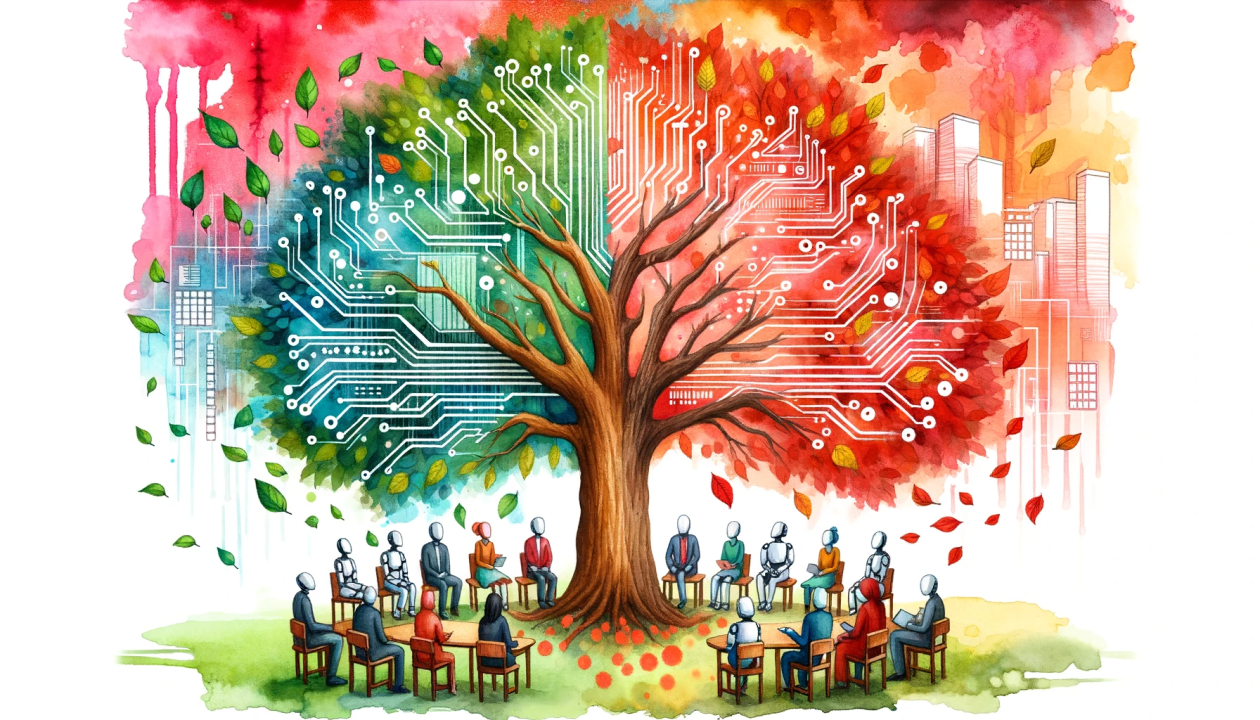
How AI and Humans Can Work Together from A Social Constructivist Perspective
Artificial intelligence (AI) is transforming the world of work, creating new opportunities and challenges.
How can we understand and navigate this complex and dynamic landscape? In this LinkedIn article, I will use some social constructivist concepts to outline a possible framework for examining AI-human collaboration and the ideas of professionalism and value systems of work.
Social constructivism is a theory that emphasizes the role of social interactions and cultural contexts in shaping human knowledge and reality. According to this perspective, we are not passive recipients of information but active agents who construct meaning through dialogue, negotiation, and reflection with others. Social constructivism also recognizes that different groups may interpret and value the world differently based on their historical, cultural, and personal backgrounds.
One of the key concepts in social constructivism is the zone of proximal development (ZPD), proposed by Lev Vygotsky. The ZPD is the gap between what a learner can do independently and what they can do with the guidance or collaboration of a more capable peer or mentor. The ZPD represents the potential for learning and development, which can be realized through scaffolding, feedback, and co-construction of knowledge.
Another essential concept is the community of practice (CoP), developed by Jean Lave and Etienne Wenger. A CoP is a group of people who share a common interest or activity domain and interact regularly to learn from each other and improve their practice. A CoP has three dimensions: domain (the shared topic or field of interest), community (the relationships and interactions among members), and practice (the shared repertoire of tools, methods, norms, and values).
How can we apply these concepts to AI-human collaboration?
One way is to view AI as a partner or tool to help professionals expand their ZPD and enhance their learning and performance. For example, AI can provide personalized feedback, suggestions, or recommendations based on data analysis and machine learning. AI can augment our capabilities by automating or assisting with tedious, repetitive, or complex tasks. We can learn new skills, solve new problems, and create new values by working with AI.
Another way is to view AI as a member or a resource of a CoP that can contribute to the collective knowledge and practice of human workers. For example, AI can generate new insights, perspectives, or solutions based on data mining and natural language processing. AI can facilitate communication, coordination, or collaboration among workers by providing platforms, interfaces, or agents. By working in a CoP with AI, workers can share their experiences, ideas, and feedback with AI.
However, working with AI poses some challenges and risks for professionals. One is the ethical dilemma of balancing the benefits and harms of AI for individuals, organizations, and society. For example, how can AI be fair, transparent, accountable, and respectful of our dignity and rights? How will we prevent or mitigate the negative impacts of AI on our well-being, such as job displacement, privacy invasion, or social isolation?
Another challenge is the identity crisis of defining and maintaining one's professionalism and value system in the face of AI's influence or competition. For example, how to cope with the changing expectations, roles, or responsibilities of one's profession or occupation? How does one demonstrate competence, creativity, or uniqueness compared to AI? How do we align one's values, goals, or motivations with those of the organization concerning AI?
These challenges require professionals to adopt a critical and reflective stance towards AI and themselves.
It also requires professionals to engage in continuous learning and development to keep up with the changing demands and opportunities of the AI era. In this process, social constructivism can offer valuable principles and strategies to co-create knowledge and reality with AI meaningfully and ethically.
References:
Vygotsky, L. S. (1978). Mind in society: The development of higher psychological processes. Harvard University Press.
Lave, J., & Wenger, E. (1991). Situated learning: Legitimate peripheral participation. Cambridge University Press.
Jones, M. L., & Crompton, H. (2019). Human–AI Interaction: A Review of the Literature and Agenda for Future Research. International Journal of Human-Computer Interaction, 35(1), 1-18.
Gorman, M. E., & Gorman, M. E. (2017). Ethical implications of human–robot interactions in the workplace. Journal of Business Ethics, 146(2), 313-322.
Davenport, T. H., & Kirby, J. (2015). Beyond automation: Strategies for remaining gainfully employed in an era of very smart machines. Harvard Business Review, 93(6), 58-65.
Senior Vice President Region Executive
6moCongrats Jerry Washington, Ed.D.!
Leadership Coach | Executive Director | Nonprofit Consultant
6moLooking forward to checking it out, Jerry Washington, Ed.D.!
Program and Project Manager, Organizational Change Leader, Consultant, and Doctoral Candidate
6moAmazing! I can't wait to read it. Congrats Doc!
Faculty at Park University, College of Management - Robert W. Plaster School of Business
6moCongratulations, Dr. Jerry Washington, Ed.D.